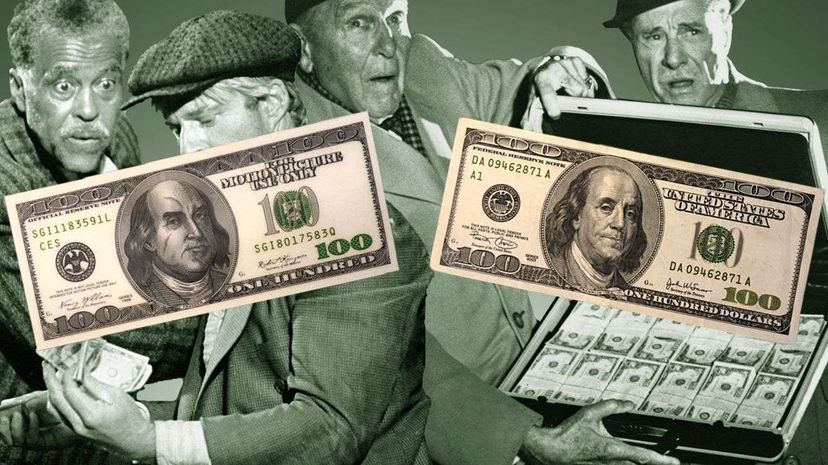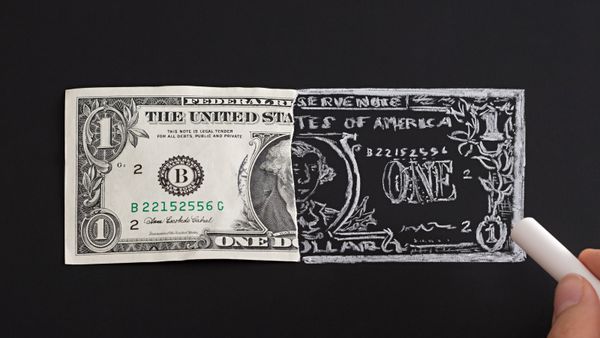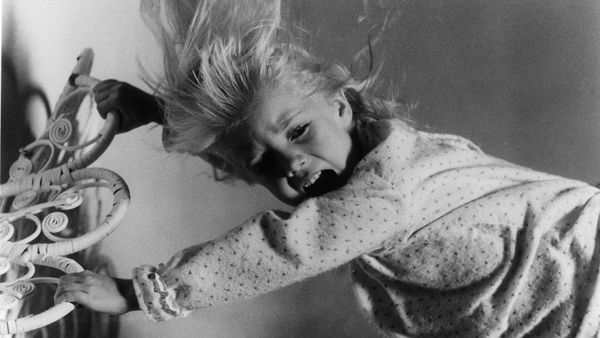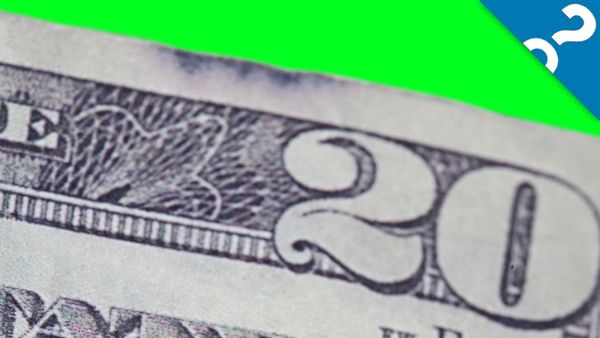
In Dog We Trust.
President Frankin.
Advertisement
For Motion Picture Use Only.
Those are just a few of the glaring differences between fake prop movie money and real legal tender. But that hasn't stopped hundreds of enterprising scammers from passing off the phony bills at cash registers across the United States.
Earlier this week, two men bought two used cars in Georgia using more than $3,000 worth of Hollywood funny money. In April, prop cash was used in a string of counterfeit purchases in Waterloo, Iowa. Same story in Tennessee, Texas and Alabama.
RJ Rappaport is founder and CEO of RJR Props and Set Dressing Services in Atlanta, one of the top producers of ultra-realistic prop money. Rappaport's fake cash has been used in blockbusters like "The Wolf of Wall Street" and "Let's Be Cops," and it's rained down in hundreds of music videos by artists like Kendrick Lamar and 50 Cent.
"There's a very serious problem right now," says Rappaport. "There are folks who are making prop money that's too realistic, and it's getting used in crimes from coast to coast."
Indeed, last week, an Atlanta couple bought $1,000 in merchandise from a Wal-Mart. Not all criminals get their prop money from a movie set. Many buy it online from sites like Amazon and eBay.
In the prop industry, there's a fine and often blurry line between making legal fake money and straight-up counterfeiting. The Secret Service, oddly enough, is the agency tasked with enforcing U.S. counterfeit laws, but it doesn't publish explicit rules for movie money. And prop companies that cross the agency's blurred line will get an unwelcome visit from the feds.
Just ask Gregg Bilson Jr., president and CEO of Independent Studio Services (ISS), one of the biggest prop houses in Hollywood. Back in 2000, ISS got a huge order from the producers of "Rush Hour 2" — $1 billion in fake $100 bills.
"Fourteen pallet loads of $100 bills," remembers Bilson. "Just to buy the paper to make the billion dollars — and this was 16 years ago — cost $77,000. And that didn't include the printing, the labor, everything."
"Rush Hour 2" producers brought in a Secret Service agent to give the green light to the film's climactic stunt — blowing up the billion dollars in cash and having it rain down on the crowded Las Vegas Strip. Halfway through production, the agent informed the producers that the money printed by ISS was too close to the real thing. But the producers ignored the agent and never told Bilson.
"When we filmed the scene, extras grabbed handfuls of the cash to keep as souvenirs," says Bilson. "Then those bills started turning up in different places. That's when the proverbial s&%t hit the fan."
Bilson received a cease-and-desist order from the Secret Service and had to turn over or destroy all remaining copies of the prop currency. The feds eventually recovered 19 fake bills that passed at cash registers in Las Vegas and Los Angeles and more than $180 million that was stashed as souvenirs. That was the last time ISS printed prop money. Now Bilson encourages productions to use real money instead, which is perfectly legal.
"There's this urban legend out there that you can't photograph real money," says Bilson. "The first thing Secret Service will say is to use real money. Other than having hundreds of thousands or potentially millions of dollars exposed, there's no reason not to use real money."
ISS now sells stacks of blank bills — some are even street-aged — that can be topped with one real one and passed off as millions. But for music videos that call for close-ups of rappers flipping through stacks of hundreds, blanks aren't going to cut it. That's where RJ Rappaport and his Atlanta prop house come in.
Rappaport sells two main types of prop cash popular with productions, a two-sided version used for background that's "100 percent impossible to mistake for real money," and a one-sided version designed for close-ups that's dangerously close to the real thing, until you flip it over and it's blank.
"The Secret Service keeps statistics about what counterfeit bills have been used in crimes. Our money has never, ever, ever been used in a crime," says Rappaport. "You would have to be blind. I love Ray Charles, but Ray Charles would be able to tell our money is fake, and not only is Ray Charles blind, but he's dead."
Rappaport designs the fake bills himself, spending as much as a year tweaking his original drawings — not copies, he insists — to meet his clients' demands while staying on the right side of the law. It's not always easy.
"There is no acceptance letter that you get from the FBI, or Secret Service or law enforcement. It doesn't work like that," says Rappaport. "They don't say, 'Yup, that's fine.' But they will say, ‘We won't go after you. That's acceptable.' That's as much of a handshake and a nod as you're going to get. Very often, though, you won't even get that. It's almost impossible to get a meeting with the Secret Service."
The Secret Service might not publish official guidelines for prop money, but it does provide a handy chart for identifying counterfeit currency. So heads up to the distracted 16-year-old checkout girl texting her boyfriend at the register: That next $100 bill might be a leftover from a Lil Wayne video.
Advertisement


